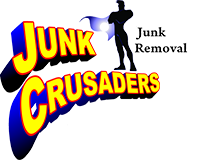Where Does All My Trash Go?
Some things they just don’t teach in schools. It’s likely that you’re curious where trash ends up but have never really learned what happens to it. If that’s the case, here is a quick guide on all things trash and trash removal. It’s always great to learn about what happens to the items we dispose of and where they end up. Once you know more about this process, you’ll be catching yourself thinking about the next carton of milk you throw out long after it leaves your hands.
Types of Common Household Waste
Recyclable waste
A lot of the items we throw out are recyclable. Many plastics, metals, and glass items can be treated and reused. These items don’t break down quickly when left in a landfill, so it’s best to recycle them so they don’t take up unnecessary space in our landfills. Rather, they can go to good use and be used for new products in the future.
Compostable waste
Organic waste that breaks down naturally is called compost. While paper is typically taken to recycling centers, paper products like napkins and cardboard are also compostable. The majority of compostable items, however, come from agricultural and food waste. Food waste can be left to break down and then used as compost once it has fully decomposed. Compost is rich with nutrients that is very beneficial when added to soil and is a great resource in the agricultural and food industry.
Electronic waste
Another important category of waste to take note of is E-waste. E-waste includes a lot of the technology we have laying around, like smart phones, computers, and other electronics. Most of these objects contain batteries or other materials that are hazardous as they break down. A lot of people don’t realize how important it is to properly dispose of these items rather than thrown out with the rest of your garbage. These items can be taken apart and sorted so that the plastics or metals that made up the items can be recycled while the batteries containing hazardous acids can be kept separate to be disposed of properly. These contents can only be discarded properly at a hazardous waste center. Look up hazardous waste disposal facilities in your area to properly dispose of these items and consider checking out this guide on recycling electronics.
The 4 Types of Waste Destinations
Landfill
At landfills, waste is put in a deep hole in the ground. The hole is typically lined with a plastic sheet and layers of clay or dirt depending on the type of landfill. When the landfill becomes full, the large pile of waste is then covered with more layers of plastic lining and dirt or clay to confine the pile of waste. Landfills are not designed to promote the decomposition of trash, so it happens very slowly. This method of waste disposal is intended to isolate the trash from the rest of the environment.
Recycling Center
At recycling centers, many plastics, papers, metals, and other materials are treated so they can be used to produce new products. Putting these materials to good use again saves a lot of energy and limits the amount of space we fill in landfills. Anytime you can recycle, you should!
Composters
At composting centers, organic solid waste, like leftover foods and papers, are strategically left to decompose. There are several methods used to promote natural decomposition.
- One method, known as windrow composting, takes place when the materials are placed in long, 5 feet tall piles known as “windrows,” and periodically turned so all the contents get to spend time in the center of the pile. The center is where heat and bacteria hurry along the composting process.
- Another process, in-vessel composting, occurs when organic waste is fed through concrete lined silos. These silos make it easy to control the environment and process a lot of waste at one time.
- Finally, there’s aerated static pile composting. This method exposes the waste to air flow to generate a speedy composting process. This is accomplished by piling wood chips and newspapers throughout the pile to “loosen it up” and create paths for airflow or by running pipes with holes through the waste.
Trash Incinerators
Trash incinerators are capable of burning almost any type of waste. These facilities typically get up to 1800 degrees Fahrenheit and are capable of burning any substance you can think of. Often, this heat source is used to produce energy.
Trash Removal with Junk Crusaders
Now that your curiosity is satisfied, you’ll probably pay more attention to your trash from now on. As always, Junk Crusaders can assist with any trash removal needs you may have. Our expert team can do all the sorting and hauling for you! You you can be assured that your waste is being disposed of in the most environmentally-friendly way as possible.

